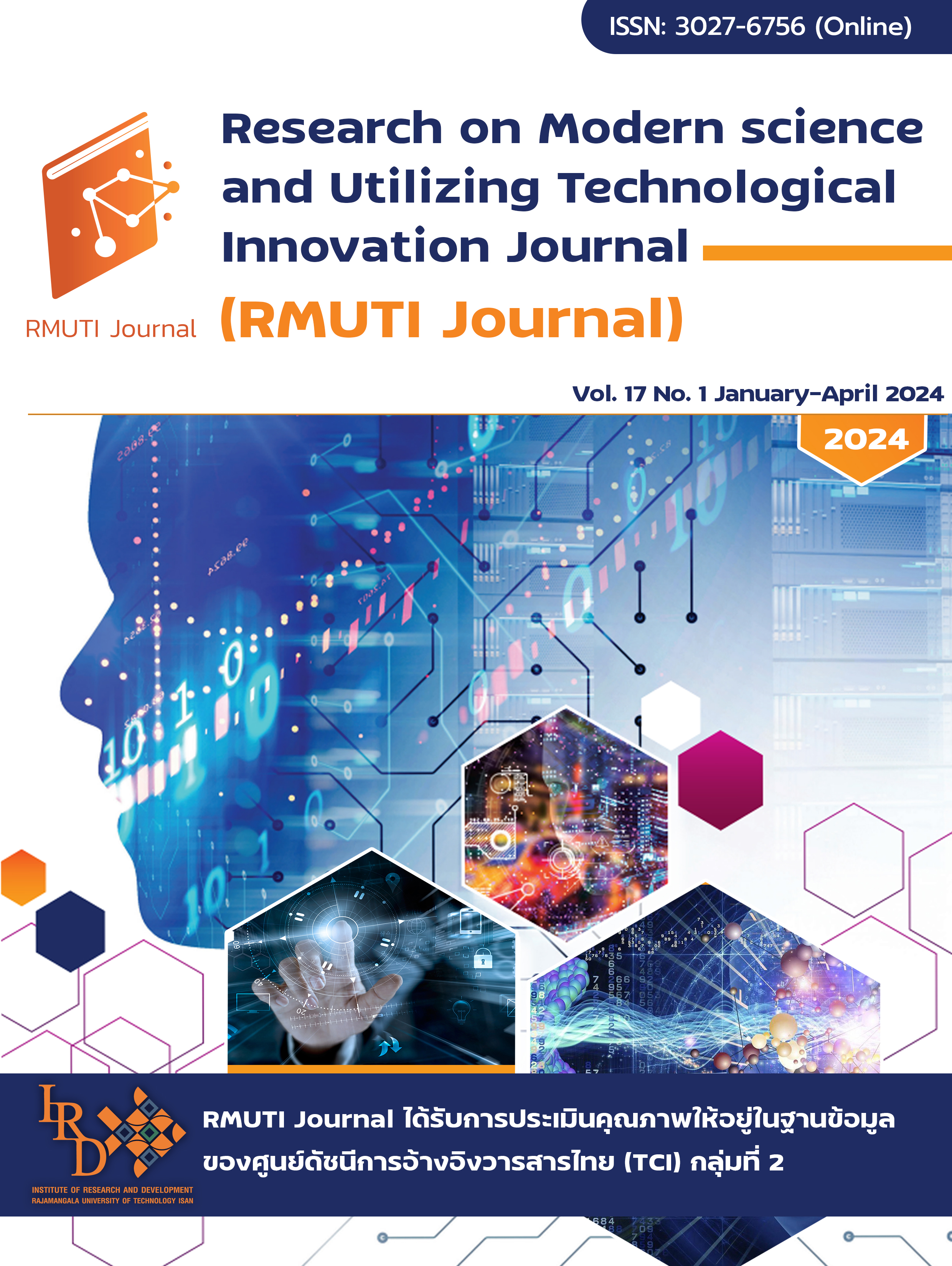Development of Mouthwash from Guava Leaf Extract and Maweng Kruea Fruit Extract
Main Article Content
Abstract
This study aims to test the antibacterial efficacy and antioxidant activity of leaf extract and Maweng Kruea fruit extract and develop a mouthwash product containing extracts from guava leaf and Maweng Kruea. The experiments were conducted by extracting both herbs with 95 % ethanol. Research results indicated that herbal extracts possess inhibitory effects against Streptococcus mutans. The minimum inhibitory concentration (MIC) that can inhibit microbial growth was found at 0.25 mg/mL, while the minimum bactericidal concentration (MBC) for killing bacteria was found at 0.25 mg/mL, with an MBC/MIC ratio of 1. The mouthwash composed of guava leaf and Maweng kruea fruit extracts exhibited antioxidant properties with an IC50 of 16.06 μL/ml. The developed mouthwash from these herbal extracts was found to have physical properties suitable for oral use, including a clear yellow color, slightly bitter and slightly sweet taste, minty aroma, slight cooling sensation, no tongue irritation, and a pH value of 6.7, making it suitable for oral conditions.
Article Details

This work is licensed under a Creative Commons Attribution-NonCommercial-NoDerivatives 4.0 International License.
References
Department of Dental Public Health, Department of Health. (2012). Promoting Oral Health for Overall Health at Every Stage of Life. Bangkok: The Royal Thai Army Welfare Printing Office
Opiyanont, N. (2022). Bad Breath. Dentistry Department, Faculty of Medicine Ramathibodi Hospital, Mahidol University. Bangkok
Chidchuangchai, W. (2015). Oral Examination and Diagnosis. 2nd Edition. Bangkok: Mister Copy
Kraipiboon, P. (2013). Diseases of the Oral Cavity and Teeth. Bangkok: Amarin Health Amarin Printing and Publishing
Lutterodt, G. D. (1992). Inhibition of Microlax-Induced Experimental Diarrhoea with Narcotic-like Extracts of Psidium guajava Leaf in Rats. Journal of Ethnopharmacology. Vol. 37, Issue 2, pp. 151-157. DOI: 10.1016/0378-8741(92)90073-Z
Apisariyakul, A., Vanittanakorn, N., and Buddhasuk, D. (1995). Antifungal Activity of Turmeric Oil Extracted from Curcuma longa (Zingiberaceae). Journal of Ethnopharmacology. Vol. 49, Issue 3, pp. 163-169. DOI: 10.1016/0378-8741(95)01320-2
Thongpraditchote, S., Hanchanga, W., Wongkrajang, Y., Temsiririrkkul, R., and Atisuk, K. (2014). Toxicological Evaluation of Solanum trilobatum L. Fruit Extract. Mahidol University Journal of Pharmaceutical Sciences. Vol. 41, Issue 4, pp. 39-46
Thoma-udta, A. and Thoma-udta, P. (2019). Development of Herbal Mouthwash Formula from Guava Leaf Extracts for Dental Use. Mahasarakham Hospital
Khemnusawan, S., Chumparang, C., and Watcharagul, S. (2021). The Antibacterial Properties of Herbal Extracts Against Oral Pathogenic Bacteria. In Proceedings of the National Science, Technology, and Innovation Conference, 3rd Edition. pp. 255-264. Science and Technology for Community Innovation at the Faculty of Science and Technology, University Loei


